How often should I service my air conditioner? How do I increase the lifespan of my air conditioning unit? Here’s what you need to know ahead of summer from RACV Trades.
Home cooling: Guide to the best air conditioners and fans
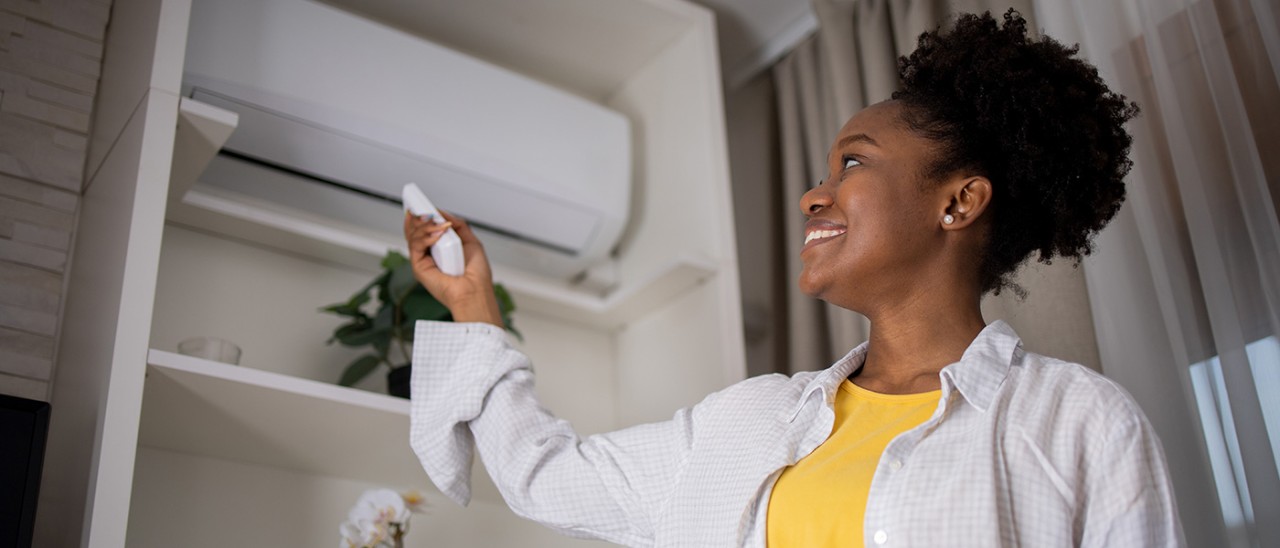
To help you choose the best cooling solution for your home, here are the pros, cons and costs of the most common cooling systems.
Choosing a cooling system for your home involves several key factors to ensure efficiency, comfort and cost-effectiveness. There’s a wide variety of devices and systems available to help you keep cool when temperatures climb, from inexpensive desktop fans to state-of-the art air conditioning units that you can control from your phone. But which is best for your home and individual circumstances?
Whether you want to cool a large space or a single room, or need help to stay safe during a heatwave, here are the pros, cons and costs of the most common cooling appliances on the market.
More: How to solar panels and solar power work?
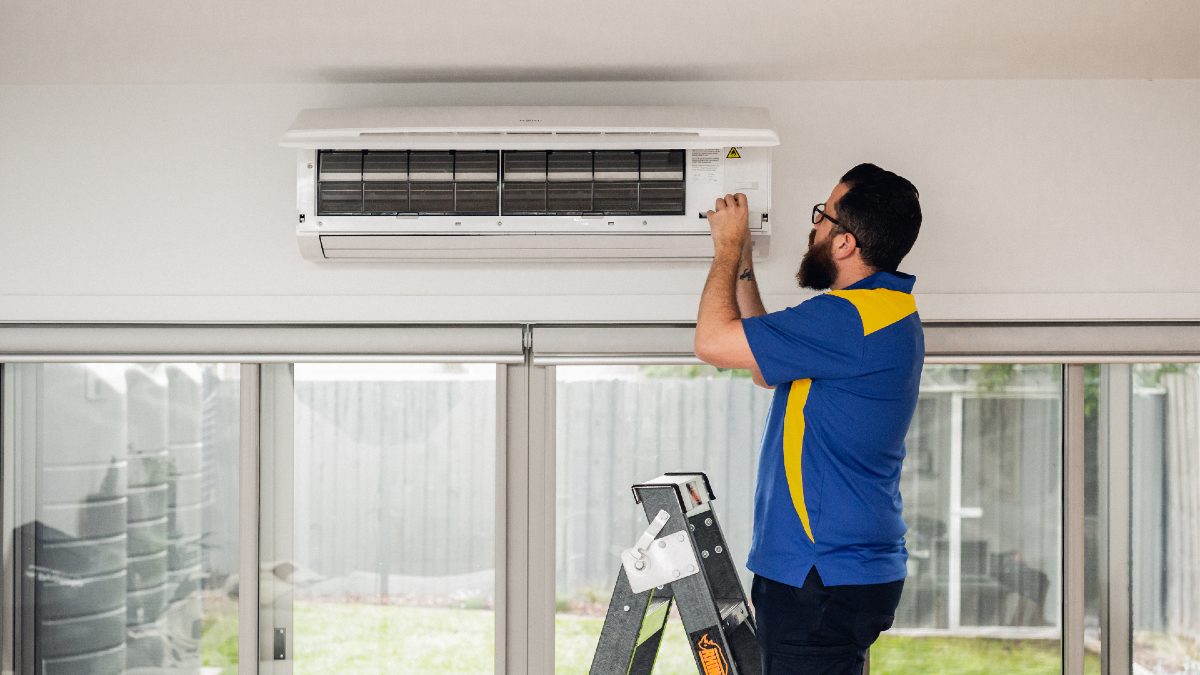
Air conditioners need regular maintenance for optimal performance
Air conditioners
Air conditioners have come a long way in recent years in terms of energy efficiency. By making your home more energy efficient you have the chance to save money in the long term.
When choosing a new system, be sure to check its Energy Star Label: the more stars, the cheaper the running costs. If you have rooftop solar panels, you can even run the air conditioner during the day using power generated from your roof, without running up your power bills.
It's also important to regularly service and maintain your air conditioner for optimal performance.
Air conditioner size
Do your research and get an air conditioner that's the right size for your space. If the system is too small it won’t do its job properly; if it's too big, you’ll be wasting money by using excess energy.
When calculating what size you need, there are four main things to consider:
- Room size - the larger your room's floor space and ceiling height, the more power you'll need to cool the area.
- Insulation - poorly insulated rooms will need more power to keep things cool.
- Location - the hotter the climate, the more air conditioning power you’ll need.
- Orientation and windows - a room with large north- or west-facing windows gets hotter and will therefore require a more powerful system than a room with shaded, southern- or east-facing windows.
What is reverse cycle?
Most modern air conditioners are reverse cycle, meaning they can both heat and cool. However, there are some split systems that only provide cooling, so double check that's the product you want before you buy it.
Split system air conditioners
A split system air conditioner is one of the most energy efficient cooling options for your home. They are called 'split system' because they have separate indoor and outdoor units connected by refrigeration piping. This keeps most of the air conditioner's noise outside.
A split system air conditioner works by pumping hot air inside your home to the external refrigeration unit and returning the chilled air inside. In winter, a reverse cycle split system air conditioner returns warm air instead by compressing the refrigerant in a condenser.
Modern split systems can be relatively inexpensive to run if the thermostat is set between 25-27°C degrees in summer, or 18-20°C in winter. Every degree higher or lower in these seasons could add ten per cent to your running costs.
- Unit cost: Split system unit costs vary widely, from $500 to $2,000+ depending on its energy rating and power (kW).
- Installation cost: Split system air con installation costs a further $600-800 on average.
- Running costs: Running costs depends on the unit's energy rating and your room size. Sustainability Victoria estimates the annual energy cost can range from $5 for a small area (3 stars, 12m2) to $42 for a large area (2.5 stars, 60m2) for a split system air conditioner. The annual cost is much higher for a multi-split reverse-cycle air conditioner. These figures are also based on an average existing (pre 2005) house in a Melbourne (mild) climate and average cooling usage, and don't take into account days of extreme heat. If you have rooftop solar, you could power your air conditioner during the day without running up your energy bill.
- Best suited for: Cooling one or two rooms, such as a bedroom and a living room.
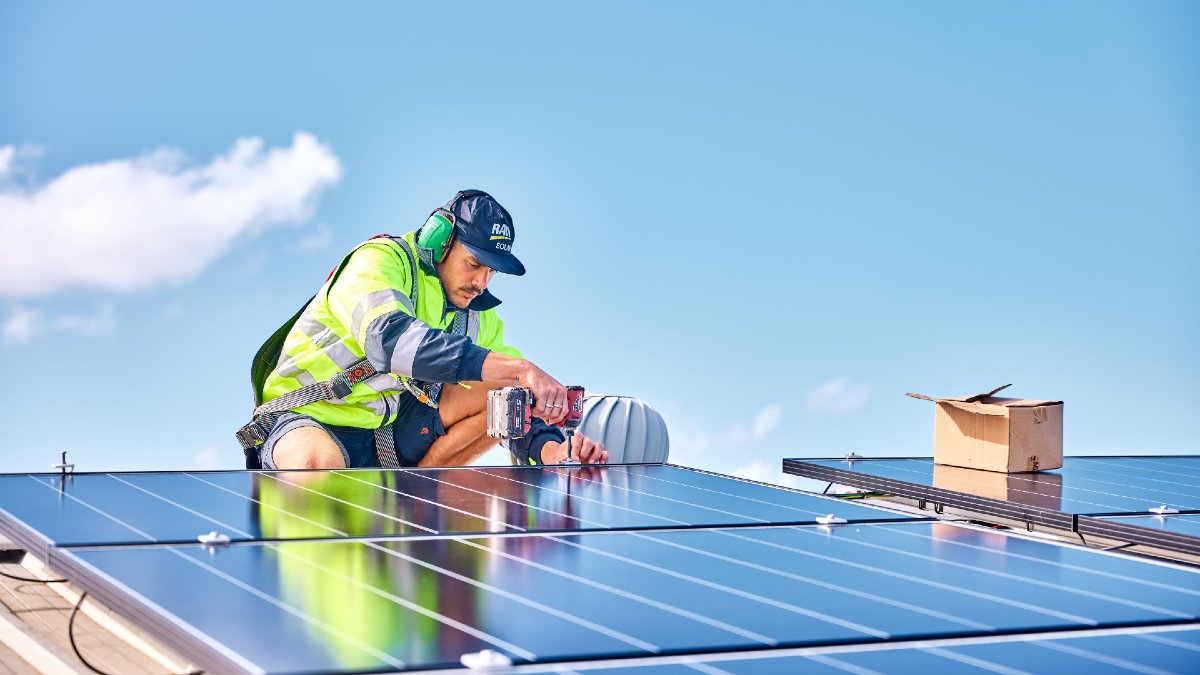
With rooftop solar, you can use your air conditioner during the day and save money on your energy bill
Ducted air conditioners
Ducted air conditioning units are more expensive than split system units, but they can cool your entire house rather than just a room or two at a time.
Ducted systems work by sending the air to a central heating and cooling unit, then sending the chilled or heated air back into your rooms via a series of air ducts and vents.
Many ducted systems now come with smart features, allowing you to turn your system on or off in certain rooms and adjust the temperature using your smartphone.
- Unit and installation cost: Ducted air con systems can be quite expensive, climbing from $9,000 for a small, single-storey home to $20,000 for a large, multi-storey home.
- Running costs: Sustainability Victoria estimates that the annual energy cost can range from $55 for a small house (3.5 stars, 100m2) to $134 for a large house (3 stars, 220m2) for a ducted refrigerative air conditioning (not zoned). These figures are based on an average existing (pre 2005) house in a Melbourne (mild) climate and average cooling usage, and don't take into account days of extreme heat.
- Best suited for: Larger homes where you want to cool several rooms at once.
Window- or wall-mounted box air conditioners
If you’re on a tight budget and want to cool a single room, a window- or wall-mounted box air conditioner might be a good option.
Although they are less energy efficient than split systems, box air conditioners cost less upfront: you can buy a small unit for as little as $400. Smaller units can also be plugged into a normal power point so there are no installation costs, although larger units may need additional wiring.
On the other hand, they are only capable of cooling small areas up to 35 square metres.
- Unit cost: Window- or -wall mounted air conditioners costs vary from around $400 to $1,300.
- Installation cost: You may not need to install additional wiring for a box air conditioner.
- Running costs: Window- or wall-mounted box air conditioners are less energy efficient than split-system air conditioners and cost more to run.
- Best suited for: Tight budgets and small areas.
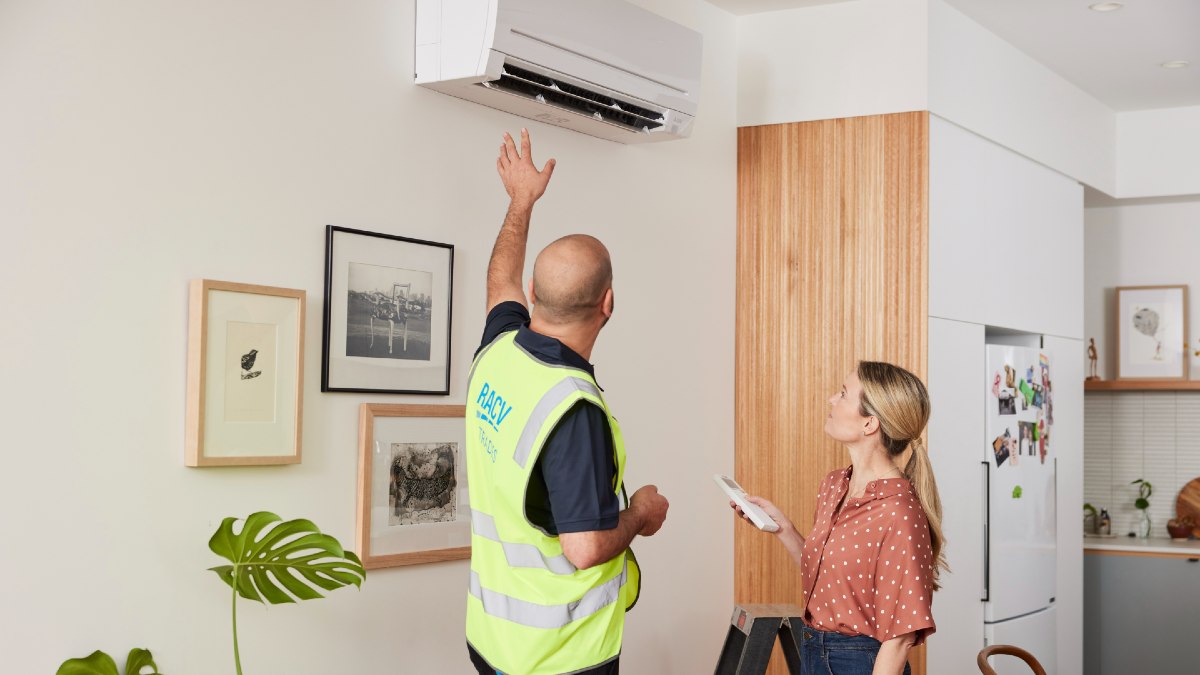
It's always best to get professional advice when it comes to installing or repairing an air conditioner
Portable air conditioners
Portable air conditioners offer the convenience of moving from room to room to cool whichever space you're in, although they may be cumbersome to move around.
They are relatively expensive to run because they are less effective and energy efficient than alternative air conditioners.
- Unit cost: Portable air conditioner units can cost between $500 and $900.
- Installation cost: N/A - no intallation required.
- Running costs: Portable air conditioners generally cost more to run than a modern split system or ducted air conditioning unit.
- Best suited for: Renters who want to cool a single room at a time, and are unable to install a fixed unit.
Evaporative cooling
Evaporative cooling systems can provide a more comfortable cooling effect than refrigerated air conditioners. They supply moist rather than dry air, which can help sensitive eyes, throats and skin.
They work by drawing in warm air from outside, then running the air through wet filter pads kept moist by water from a tank at the unit's base. As the water from the pads evaporates, it humidifies and cools the air. The system then blows cooled, moist air into your house.
This means that outside conditions need to be favourable for evaporative coolers to work effectively. If there are pollutants like smoke, pollen or dust in the air, they can be pushed into the home. They also require windows and internal doors to be left open, so the moist air can be vented from the house, which could contribute to the development of mould.
- Unit cost: Evaporative coolers cost around $2,500 to $6,000.
- Installation cost: Installation can cost between $2,300 up to $5,000 plus for a ducted evaporative cooling system.
- Running costs: Evaporative coolers use about half the energy of a similarly sized ducted split system air conditioner. However, they also use up 25 litres an hour of water, which will add to running costs, as well as exceeding Melbourne's average water use of 164 litres per person a day.
- Best suited for: Dry climates, and people who find that the dry heat of refrigerative air conditioning irritates their eyes or skin.
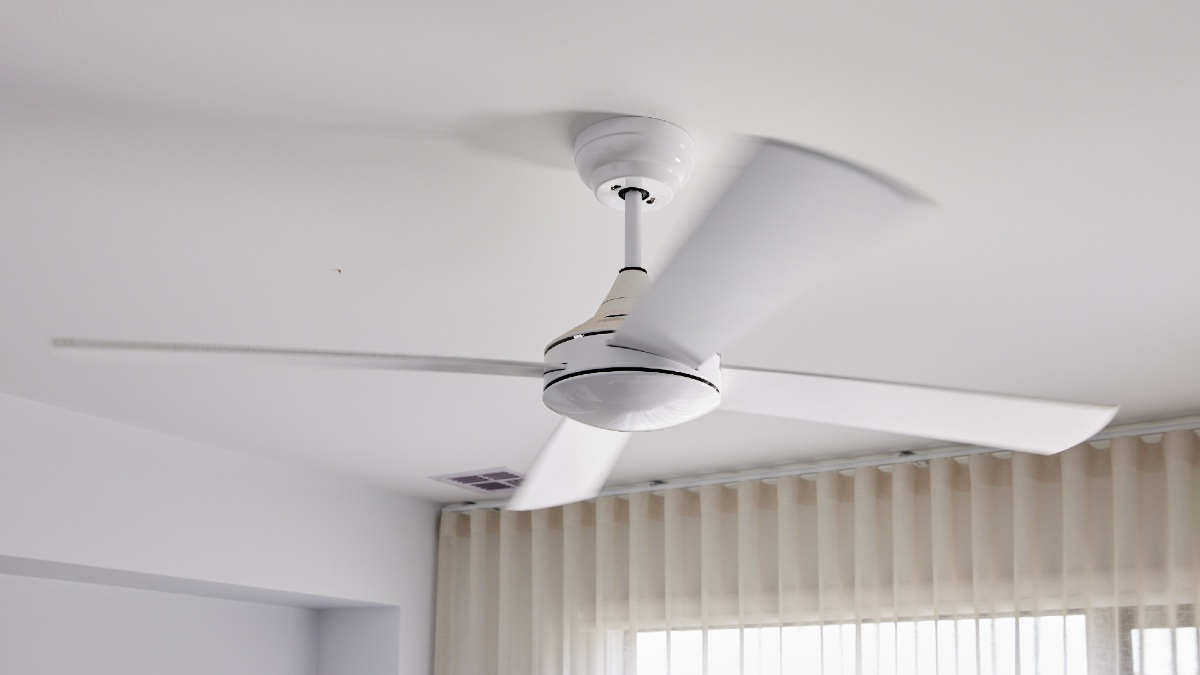
Fans are relatively inexpensive to run and can make a room feel cooler by circulating the air
Fans
Fans are a great option to keep you cool in warmer weather without the relatively high energy expenditure of an air conditioner.
Fans don't actually lower room temperature, but they make you feel cooler as air circulates over the skin. Using a fan along with your air conditioner can help circulate chilled air, so you don’t need to set the thermostat quite so low.
If you can't install an air conditioner or want to drastically cut your energy bill, using fans might be the answer.
Pedestal and desk fans
Inexpensive to buy and cheap to run, desk fans are great for those working from home, while pedestal or tower fans can be directed to the part of the room you’re using – such as the couch or bed – to help you feel cooler. They also require no installation, simply needing to be plugged into a power point.
- Unit cost: You can buy a small pedestal fan or desk fan for less than $20.
- Installation cost: Free.
- Running costs: Portable electric fans can cost less than two cents an hour, according to Sustainability Victoria.
- Best suited for: Those on a limited budget.
Ceiling fans
Although less effective than split system or evaporative air-conditioning when it comes to cooling a room, ceiling fans tend to work better than pedestal or desk fans because they circulate more air over a wider area and make the whole room feel cooler. When used in conjunction with air conditioning, they help circulate chilled air around the room.
- Unit cost: Ceiling fans can cost anywhere between $120 and $800.
- Installation cost: Ceiling fan installation generally costs between $150 to $600 per fan.
- Running costs: Ceiling or wall-mounted fans can cost less than two cents per hour to run, according to Sustainabilty Victoria.
- Best suited for: Moderately warm days, or to boost air conditioning circulatation when temperatures soar.
Bladeless fans
These futuristic-looking fans have hidden blades that draw in and push out air to create a breeze. The lack of visible blades means that they are easy to clean and safer if you have young children in the house. However, the airflow may be inefficient and the appliance may make more noise than a pedestal or ceiling fan.
- Unit cost: High-end brand-name versions can cost as much as $500 or more, but you may be able to find a lesser-known brand for as little as $69.
- Installation cost: No installation required.
- Running cost: Similar to a pedestal or desk fan.
- Best suited for: Those with young children, or those who prefer the clean lines of a bladeless device.
Take the time to assess these factors to ensure that you choose an air conditioner or fan that suits your specific needs, and call a qualified and licenced tradesperson if you require help to replace, install, service or repair an air conditioning systems.


